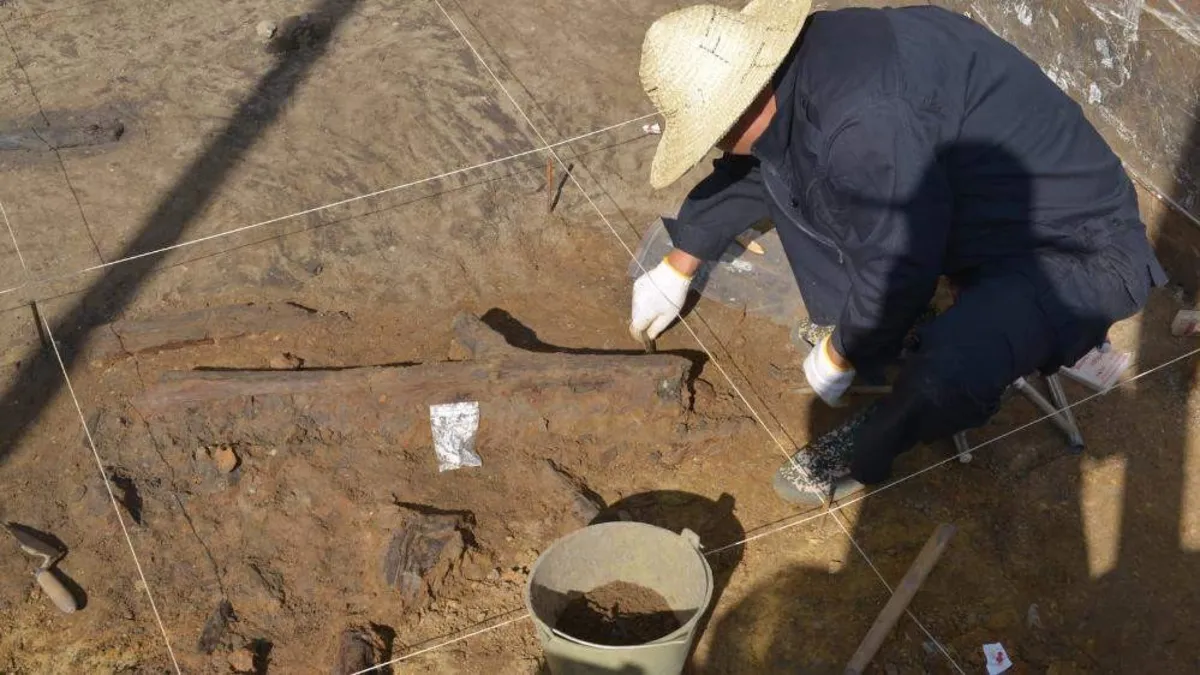
Archaeologists have made an astonishing discovery in China, uncovering 35 wooden tools that date back to the Old Stone Age, showcasing remarkable craftsmanship and advanced cognitive skills. This significant finding provides new insights into the dietary habits of ancient humans. The tools, estimated to be around 300,000 years old, represent the oldest known wooden artifacts in East Asia, according to a recent study published on July 3 in the journal Science.
The collection includes various implements such as digging sticks made from pine and hardwood, hooks designed for cutting roots, and small, pointed tools intended for extracting edible plants from the ground. This remarkable discovery captures a crucial moment in history when early humans skillfully utilized sophisticated wooden tools to harvest food resources hidden beneath the earth's surface. Bo Li, the lead author of the study and a professor at the School of Earth, Atmospheric and Life Sciences at the University of Wollongong, Australia, emphasized the significance of these findings, stating that they shed light on the sophisticated tool-making abilities of our ancient ancestors.
Dating back to the early Paleolithic period, also referred to as the Old Stone Age (approximately 3.3 million to 300,000 years ago), these tools are extremely rare. The organic decomposition of wood typically hinders the preservation of artifacts from this era. Previous archaeological sites have yielded only a few wooden objects, such as spears from Schöningen, Germany, primarily used for hunting. In stark contrast, the newly discovered tools were specifically crafted for digging.
The tools were unearthed from oxygen-poor clay sediments at the site of Gantangqing, located on the shores of an ancient lake in southwestern China's Yunnan province. The unique conditions of the sediments helped preserve distinct polishing and scraping marks on the tools, along with remnants of plant and soil on the edges. These clues provided researchers with valuable insights into the tools' functions.
The research team concluded that the hominins at Gantangqing strategically utilized the lakeshore's food resources. They made planned visits to the area, bringing crafted tools of selected wood to exploit underground edible plants such as tubers, rhizomes, or corms. This evidence suggests that as far back as 300,000 years ago, human ancestors in East Asia demonstrated foresight and intention in their tool-making and foraging strategies.
The artifacts reveal that these early humans possessed a keen understanding of which plants were edible. The tools indicate a level of planning and craftsmanship that challenges the long-held belief that East Asian hominins were technologically primitive compared to their counterparts in western Eurasia and Africa. Li noted that previous discoveries of stone tools in East Asia appeared less advanced, which may have contributed to this misconception.
To determine the age of the tools, researchers employed a dating technique developed by Li, which utilizes infrared luminescence, along with electron spin resonance to measure the age based on trapped electrons in crystal defects from natural radiation exposure. Both methods indicated that the wooden tools were approximately between 250,000 and 361,000 years old.
While the plant remains on the tools could not be identified due to advanced decomposition, other findings at Gantangqing suggest that early humans consumed a variety of foods, including berries, pine nuts, hazelnuts, kiwi fruit, and aquatic tubers. This discovery fundamentally challenges previous assumptions about early human adaptation. Unlike contemporary European sites that focused on hunting large mammals, the Gantangqing site reveals a unique, plant-based survival strategy employed by ancient humans.